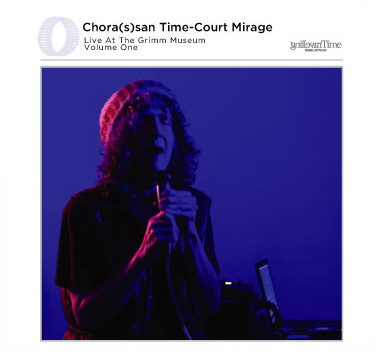Instead of dwelling on how technology has transformed music – the oft-cited history of machines enabling man to perform and record more quickly and affordably – what about considering music as a technology itself, a set of controls for physical and psychological phenomena with the power to alter our perceptions in perhaps the same way drugs can? And if our composers were equipped with an in-depth understanding of all the scientific processes involved in consuming music, from the underlying mathematics to the psychoacoustics, how would this influence their art?
If we can put aside for a moment those defeatist views of the future as a dystopian dead-end and remind ourselves of science fiction’s old promises of hovercars and houseworking robots, then we might also imagine such composers as both psychologist and pharmacist, their domed foreheads housing expert knowledge of the way we’re affected by certain combinations of tones and textures, patterns and pulses, deployed to produce works that skilfully and demonstrably navigate arrays of emotions and states. Well, Catherine Christer Hennix may be just that composer, and on the evidence of Live At The Grimm Museum – a live recording made in Berlin last year, alongside her ensemble The Chora(s)san Time Court Mirage – she has created a sound that reliably taps into our subconscious and frees us from linear time (at least for the record’s full 49 minutes, that is).
Born in 1948 in Stockholm to a jazz composer, she was playing drums from the age of five, went on to study mathematical logic at university and, at 21, headed to New York to work closely with La Monte Young, whose experiments in mining frequency ratios inspired her to concentrate further on the maths behind the music. However, along with Young and his growing network of minimalist composers that included Terry Riley, Henry Flynt and Jon Hassell, Hennix also studied Indian raga music under the ultra-traditional tutelage of the Hindustani guru Pandit Pran Nath, perhaps nurturing a spiritual dimension that studied science can often deny.
And it’s through this complex communion of mathematics and meditation, quantum theories and concept art, that Hennix arrived at ‘Blues Dhkir Al-Salam (Blues Al Maqam)’, the longform piece presented on this disc. In development since 2003, Hennix’s intentions were to reveal the blues’ origins in the eastern musical traditions of raga and maqam musics. The results, if uninterrupted by outside influences, provide a potent parade through psychological states both alien and unnerving, calming and unwinding, all the while confirming the narcotic-like power of carefully directed sound. And that’s not to say that "x is like y… on acid", that cliche so overused to lazily describe a player’s fried mindset as opposed to their impact on their audience. Indeed, previous work by Hennix, particularly her occasional collaborations in the late seventies and early eighties with Henry Flynt, confirmed that a mind-altering effect was sought: they referred to their extended tambura-drone and hillbilly fiddle workouts as "Hallucinogenic Ecstatic Sound Environments".
Here, however, tambura and fiddle are absent. Instead, we have softly radiating sine waves fixed on a specific interval, through which Hennix’s local recruits – Robin Hayward (microtonal tuba), Hilary Jeffery (trombone) and Amelia Cuni (voice) – weave their disciplined improvisations through sound sculptor Michael Northam’s "time-mirage delay" system. The piece’s warm, extended brassy tones act initially as a primer to help the listener settle into an experiencing of harmony without melody, through which rich details emerge, like a microscope zooming into sound to find each note teeming with life. These natural resonances create a sense of moving smoothly at a constant slow speed, like being carefully lowered into a bottomless abyss, the base of which begins to display fractal properties as you sink ever-deeper. Out of this awe-inspiring environment voices emerge. Unadorned by vibrato, their near-perfect pitches gild the drone with organic and ritualistic qualities. The only rhythmic elements come from colliding harmonics – musical matter that’s not deliberately ‘played’ or ‘conceived’, but arises like an apparition from the equilibrium – so any sense of duration is happily obscured, as long as you don’t steal a glimpse of any ticking time display on your player.
By the time the disk has finished, each musician gracefully dropping out to leave the omnipresent sinewave to fade alone, you realise how affecting the journey’s been and how sharpened your hearing has become by the experience. A distant road, birdsong, an aeroplane, the refrigerator and your own bloodstream all seem to conspire to continue the flow for a while. Even though this merger of minimalism and spiritualism can be traced throughout most post-sixties progressive styles – from Brian Eno’s ambience through Coil’s Time Machines to Sunn O)))’s stubborn reverberations – Live At The Grimm Museum manages to feel fresh and brimming with possibilities for future developments, particularly for the is-it-really-live? world of electronic music shows. I look forward to future volumes of Hennix’s work providing further inner worlds to explore, get lost in, and emerge changed but somehow recharged.


